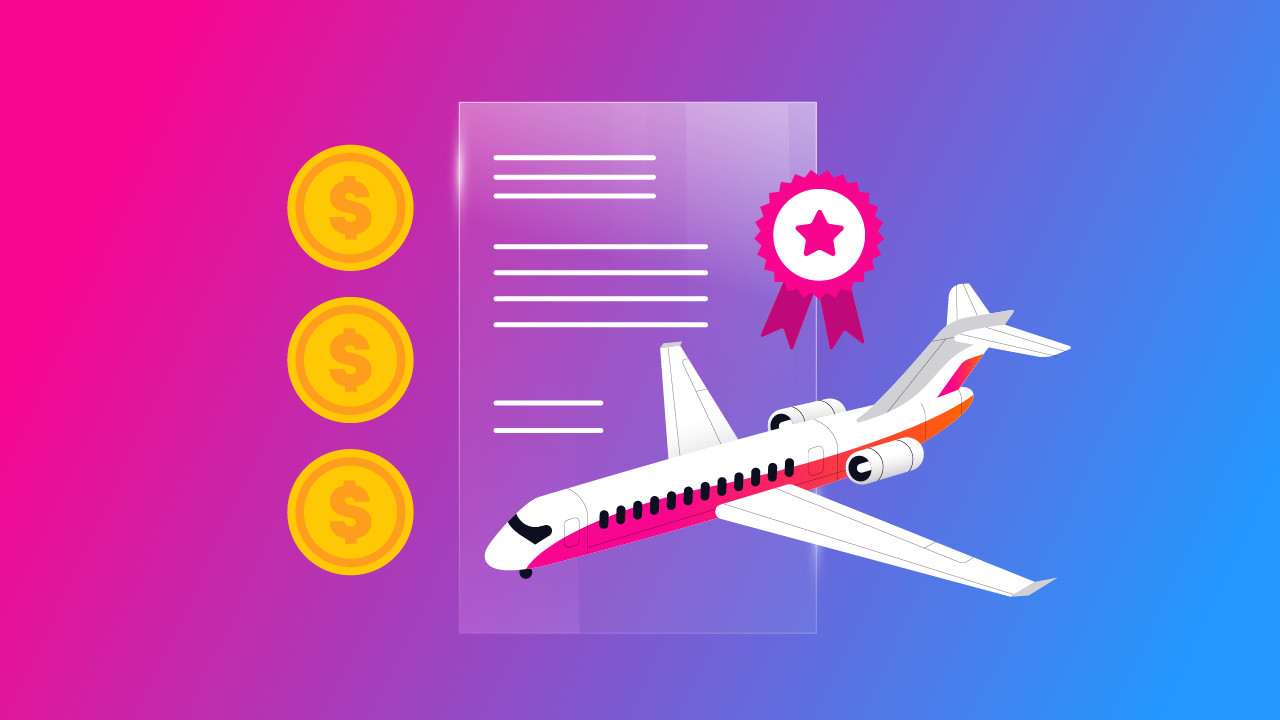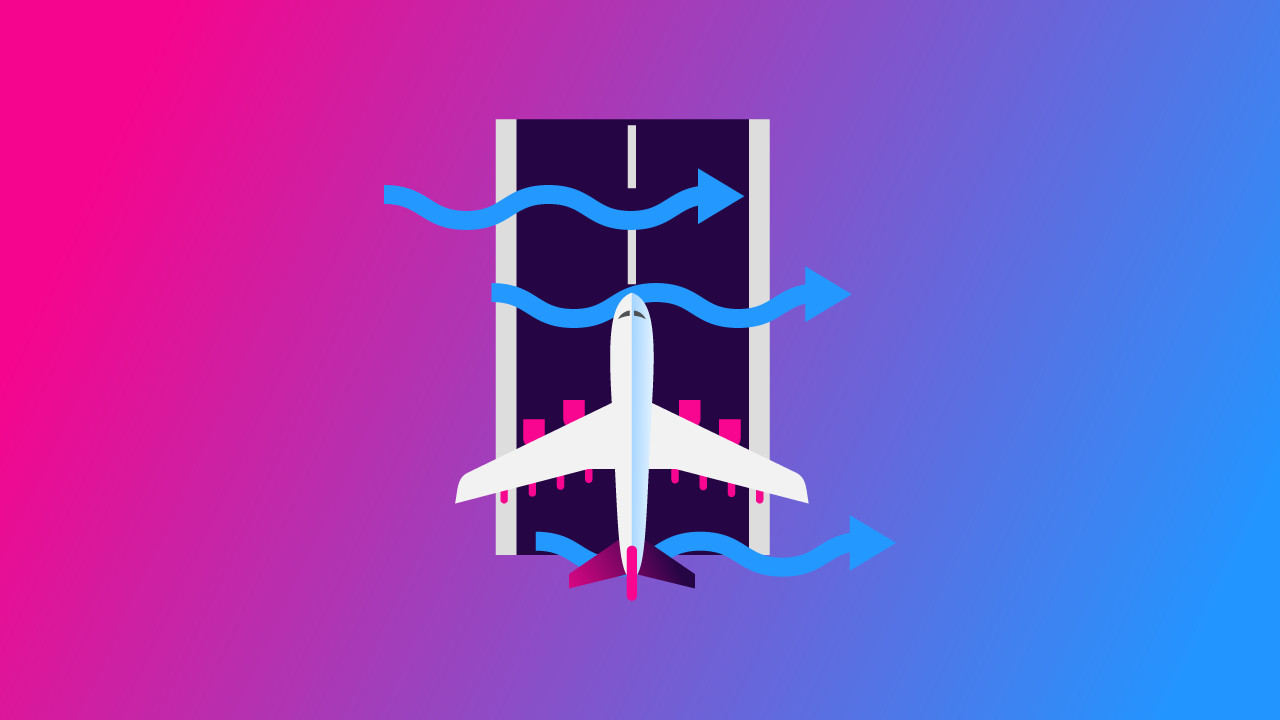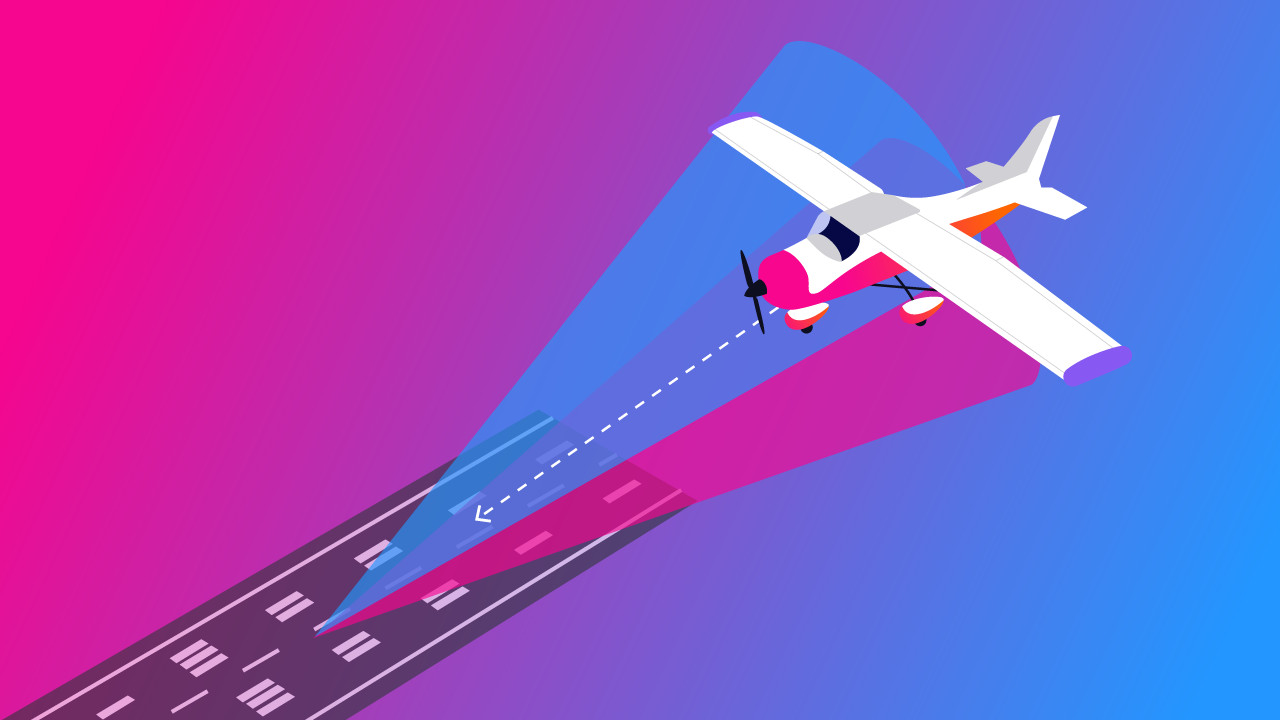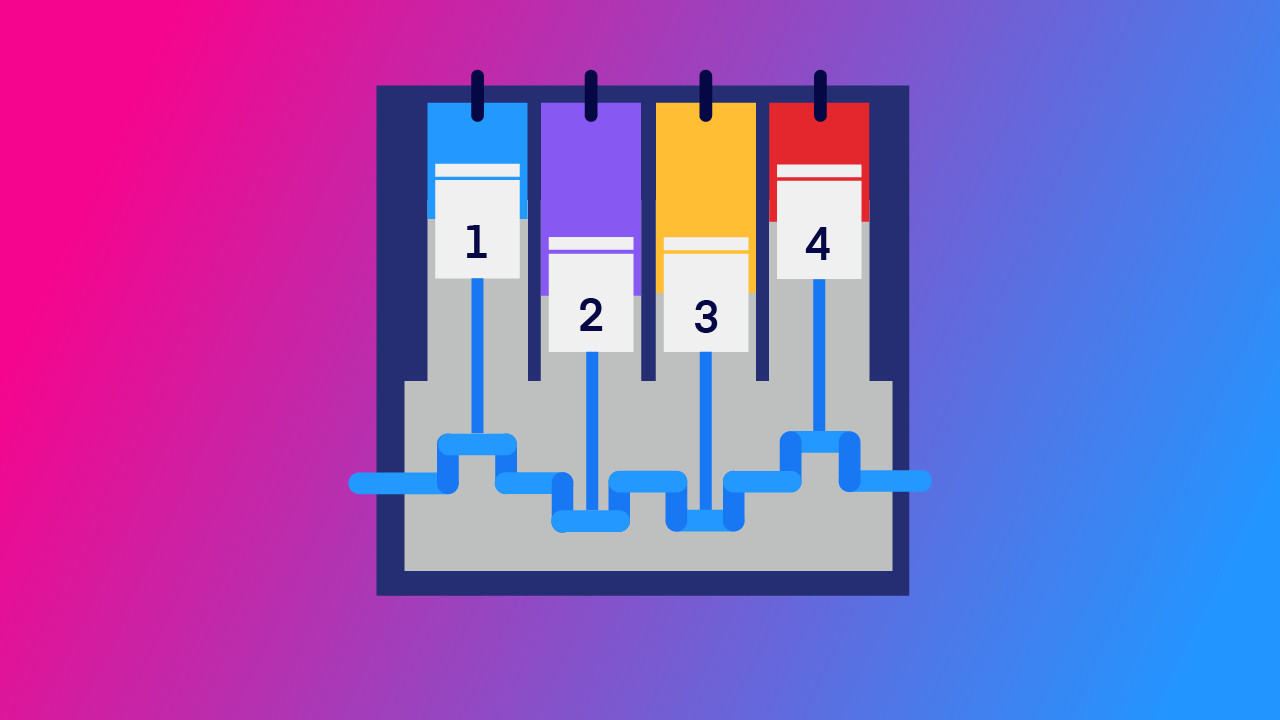Exciting news: Pilot Institute is now FAA-Approved for Part 65 Dispatcher Training!
In just 8 weeks you can become an FAA-Certified Aircraft Dispatcher and start building your career path toward $55K+ roles with Delta, United, American & more – no expensive degree required.
- We’ve trained 400,000+ aviation professionals, with a 99.8% first-time pass rate and exam scores 10% above the national average.
- And under the guidance of Justin McKelvey (FAA-Certified Dispatcher, commercial pilot, and former university professor) you’ll gain the real-world skills airlines pay for.
- Every month you wait is another hiring wave you miss (our next class starts months from now).
Only 5 slots remain per cohort – secure your spot with $799 down.
Click here to lock in your seat and start the career you’ve been dreaming of.
Being an aircraft dispatcher is an attractive career path. The job is highly dynamic and has a lot of perks to offer. If you’ve chosen this path, the investment will be worth it.
But does getting a foot in the door have to cost an arm and a leg?
If you’re concerned with your budget, the good news is that you have plenty of options! We’re here to give you the numbers and help you plan your journey.
Key Takeaways
- To become an FAA Aircraft Dispatcher, you must meet specific age, educational, and language requirements, complete a rigorous training program, and pass two critical exams.
- The cost of training varies depending on the type of program, with options ranging from full-time, part-time, online, and community college courses.
- Beyond tuition, you should budget for exams, study materials, and living expenses during your training period.
- Other potential costs include medical certifications, professional memberships, and technology investments, which can add to your overall expenses.
- Various financial aid options are available, including scholarships, payment plans, federal aid, and employer sponsorships, to help ease the financial burden.
Eligibility
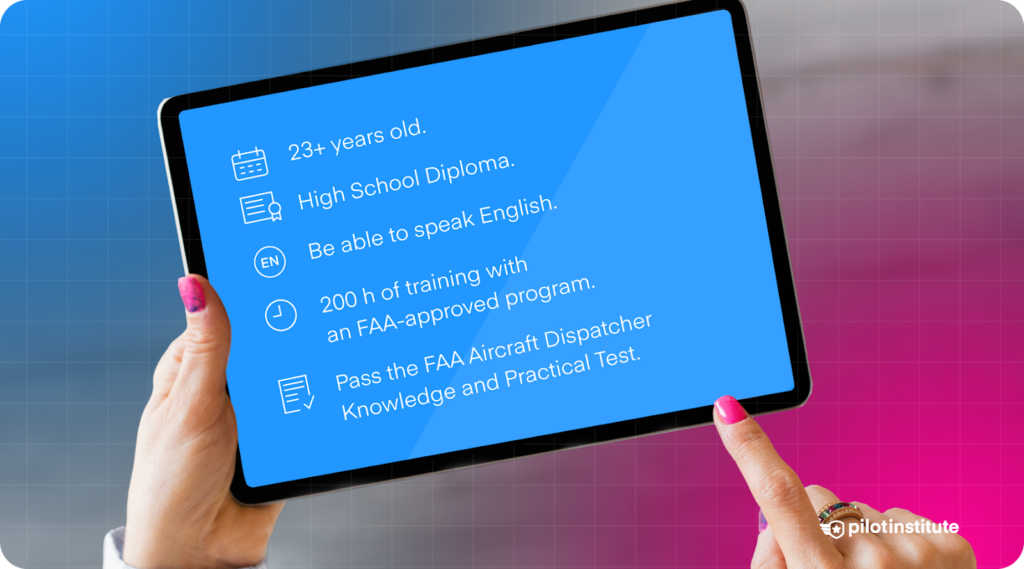
First, ensure you’ll be eligible for an Aircraft Dispatcher (ADX) Certificate. The FAA requires that you must:
- Be at least 23 years old.
- Have a high school diploma or equivalency.
- Be able to speak English.
- Undergo 200 hours of training with an FAA-approved program.
- Pass the FAA Aircraft Dispatcher Knowledge Test and Practical Test.
If you check all these boxes, you’re good to proceed with your first steps.
Dispatch School Tuition Fees
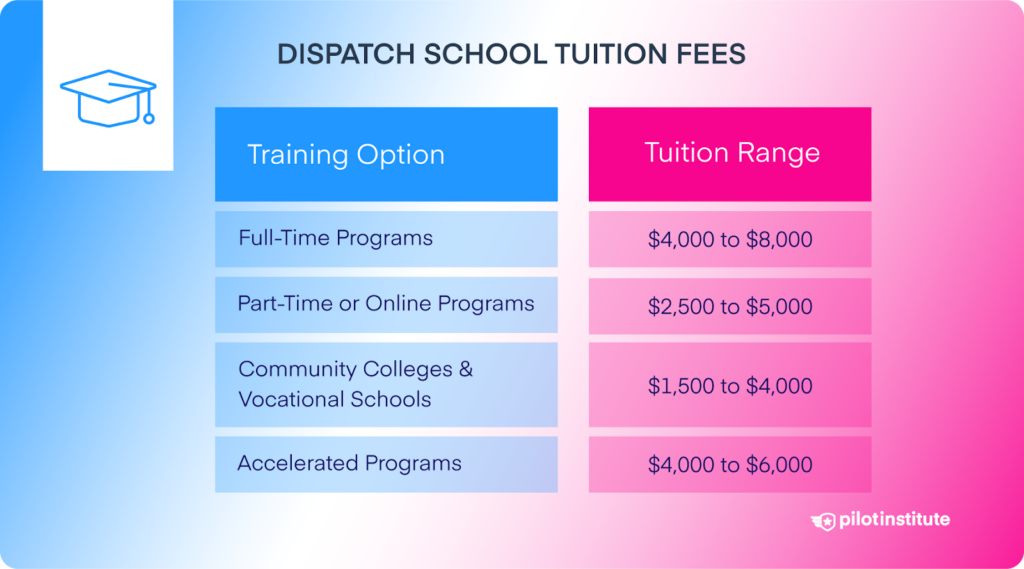
As expected, the biggest chunk of the costs will go to your tuition fees.
Dispatch school is where you will undergo the 200 hours of training required for your ADX certificate. Your training will cover a wide range of topics, such as meteorology, air regulations, and aircraft weight and balance.
Different factors affect the amount you’ll have to pay. It can depend on the type of school, the location, or whether the course is online or in-person. The FAA has published a list of accredited programs, which you can check out here.
So what are your options?
Full-Time Programs
You can check out full-time programs. They’re designed to be completed quickly, usually in about 5-6 weeks.
Full-time programs cover everything you need to know to become a dispatcher. The cost for these programs typically ranges from $4,000 to $8,000. This fee often includes the cost of training, access to necessary equipment like flight simulators, and course materials.
If you want a focused and structured classroom environment, this program is for you. You’ll also get to finish your training as quickly as possible.
Part-Time or Online Programs
Do you have other commitments and want something more flexible? Look into part-time or online programs. These programs let you study at your own pace, allowing you to adjust to your responsibilities. Take note, though, that these take longer to complete. It might take several months before you get your certificate.
These programs cost generally less, around $2,500 to $5,000.You might not get as much direct support or access to resources, so this is best for people with initiative, self-motivation, and good time management.
Community Colleges and Vocational Schools
Some community colleges and vocational schools offer aircraft dispatcher programs at a lower cost, usually $1,500 to $4,000.
These programs are typically part of a larger aviation degree. It will give you a broader education that can be helpful in your career. If you’re looking for a more affordable option, this might be the way to go.
Accelerated Programs
Do you already have experience working in aviation? Well, here’s another option for you.
Check if you qualify in the FAR Parts 65.57 and 65.61(d). Those who meet the requirements are eligible to take an accelerated training program.
In an accelerated program, your experience will be credited toward all or a portion of the required 200 training hours. This means your training will be completed much quicker, in about 3-4 weeks.
These programs typically cost $4,000 to $6,000. The fast pace means you’ll need to be ready to absorb a lot of information in a short time.
Exam Fees & Certification Costs

After completing your training, you must pass two important exams to get your FAA Aircraft Dispatcher License. These are the FAA Aircraft Dispatcher Knowledge Test and the Practical Test (the Oral Exam). These exams are the final stage in the certification process.
So how much should you budget for them?
The knowledge test is computer-based and consists of multiple-choice questions. It is designed to test your theoretical knowledge and practical skills in flight dispatch. It covers aviation regulations, weather, navigation, and flight planning.
The fee for this test is typically around $175. You can schedule your FAA ADX Knowledge Test through an approved testing center. To register, you’ll need to get an FAA tracking number (FTN) by signing up on IACRA. Once you get your FTN, create an account on the PSI website.
Being well-prepared for the exam is essential because you’ll need to pass it before moving on to the practical test. You can purchase additional study guides or take prep courses, which can add to the overall cost.
You’ll take the practical test once you pass the knowledge test. This is conducted by a Designated Aircraft Dispatcher Examiner (DADE). You can search for a DADE in your area using the FAA’s Designee Locator tool. Depending on the examiner and location, the test can cost $500 to $600.
Study Materials and Supplies
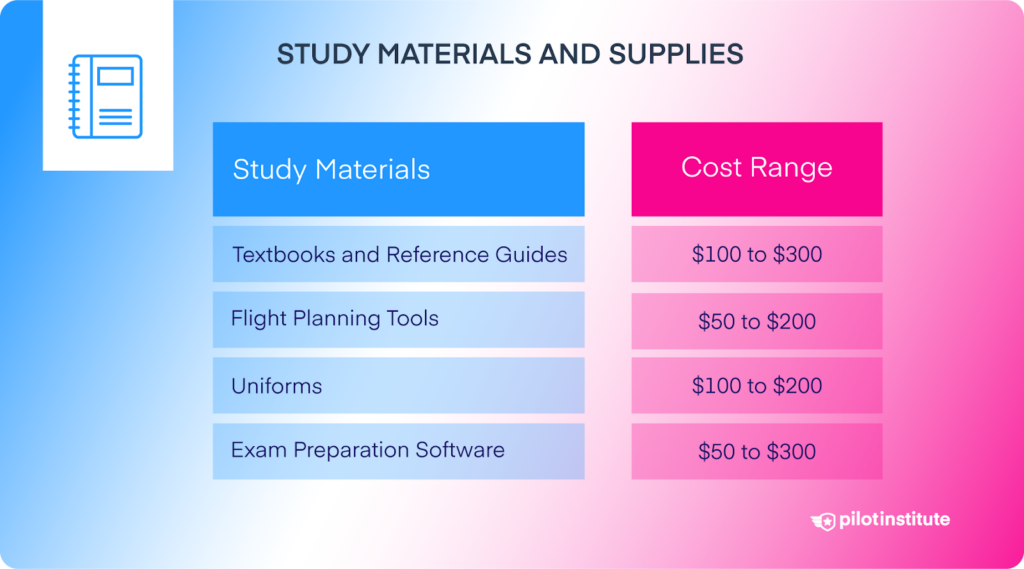
Aside from tuition and exam fees, you’ll need to budget for study materials and supplies. Some programs include these materials in tuition fees, but others might require you to buy them separately.
So, what supplies will you need?
Textbooks and reference guides are essential resources during your training. These can set you back by $100 to $300. They’re a wise investment since they’ll be handy throughout your career.
Some programs require you to buy specific flight-planning tools. You’ll use navigation charts, plotting tools, and weather service subscriptions throughout your training. Depending on the program requirements, these items can cost $50 to $200.
If your program requires uniforms or has a specific dress code, you’ll also need to budget for those. They could add another $100 to $200 to your expenses. Uniforms are often required to help you get used to the professional flight dispatch environment.
Some students also choose to enhance their learning by enrolling in additional online courses or purchasing extra study aids, such as exam prep software or practice exams. These resources can cost anywhere from $50 to $300.
Living Expenses
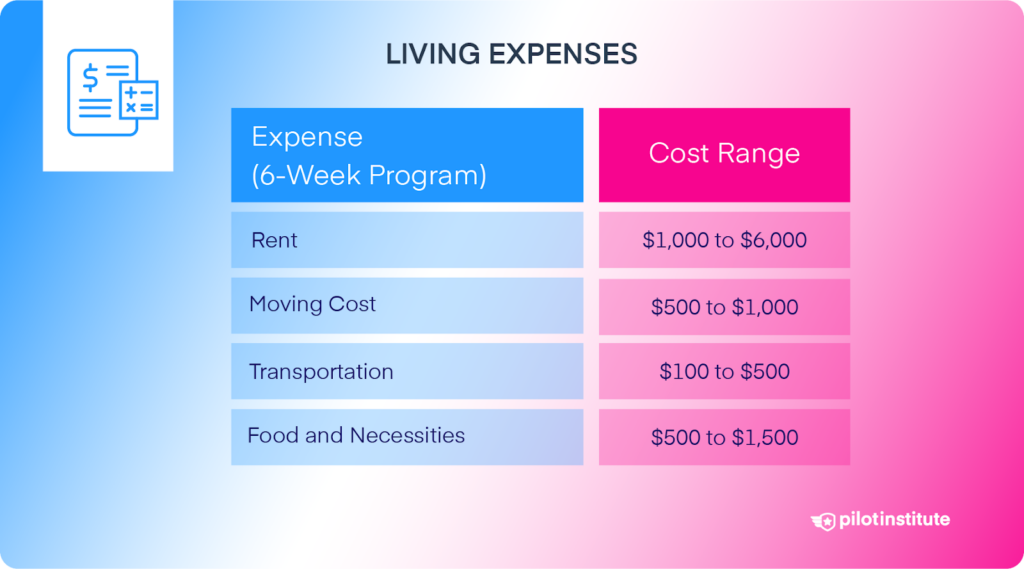
You should also consider your living expenses during your training. How far is the school campus? Will you need to move or commute? What are your meal options? Consider these costs so that you can budget adequately.
If you need to move closer to your training program, your housing options can vary depending on the location. Renting an apartment can cost anywhere from $500 to $2,000 monthly. For a 6-week program, this can add up to $1,000 to $6,000.
You should also consider the cost of moving. You’ll be setting up temporary accommodations and adjusting to a new place. This can add an extra $500 to $1,000 to your budget.
If available, consider living in student housing. It’ll be more affordable and even more convenient than renting an apartment. You could be paying only $800 to $1,200 per month.
If you commute to the training center, you’ll need to consider transportation costs. Are you driving to campus or taking public transportation? You might need to pay for gas, parking fees, or passenger fares. It’s best to budget $100 to $500 over the course of the program.
Daily living expenses should also be factored into your budget. This can include food, home supplies, and other necessities. Depending on the cost of living in the area, these expenses could add another $500 to $1,500 to your total cost.
Some programs offer meal plans or on-campus dining options, which might be more convenient and cheaper.
Miscellaneous and Hidden Fees
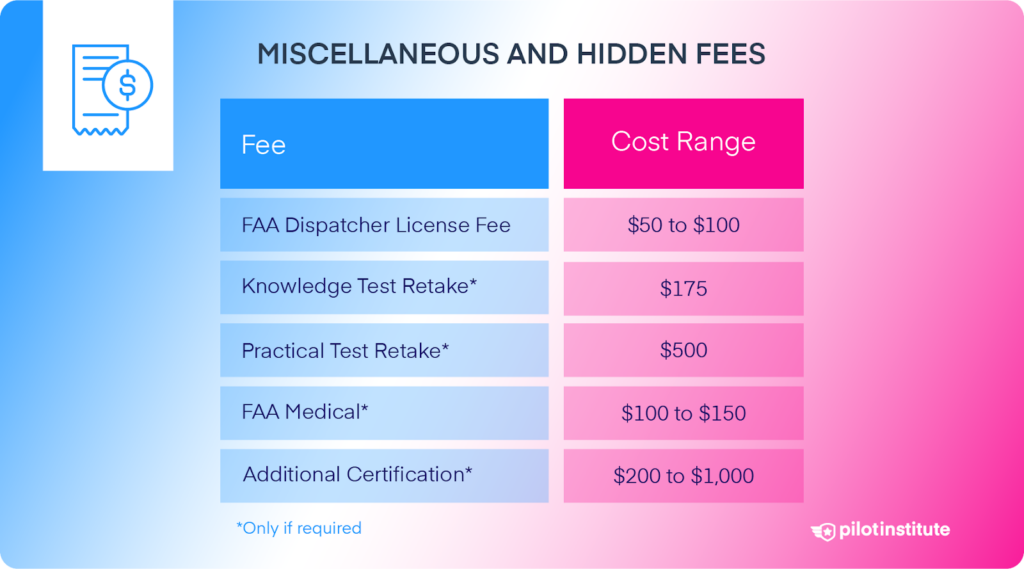
Aside from the obvious expenses, which ones might catch you off-guard? Which can you invest in to boost your career? There are plenty of miscellaneous costs that you should be aware of when planning your budget.
After passing your exams, you’ll need to submit an application for your FAA Aircraft Dispatcher License. This will cost around $50 to $100.
If you don’t pass your exam on the first try, you might need to pay to retake the test. This could add to your overall costs. Retake fees for the knowledge test cost around $175 and around $500 for the practical test. Additional practical training sessions will also cost you several hundred dollars.
While not required for certification, some programs or employers might request an FAA Medical Certificate. Depending on the examiner and the level of certification, this certificate could cost around $100 to $150.
Joining professional organizations, such as the Airline Dispatchers Federation (ADF), can be valuable for networking and professional development. These memberships often provide access to resources like industry conferences, job boards, and continuing education opportunities. Membership fees are around $30 per year.
Some dispatchers pursue additional certifications or continuing education courses to enhance their skills. Depending on the program and institution, these can cost between $200 and $1,000.
The work of a flight dispatcher is becoming more and more digitized. To catch up to this trend, you’ll need to invest in technology like a laptop or specialized software. Having the right tools can significantly improve your learning experience. The cost of these can vary, but it’s worth considering this investment.
Financial Aid and Scholarships
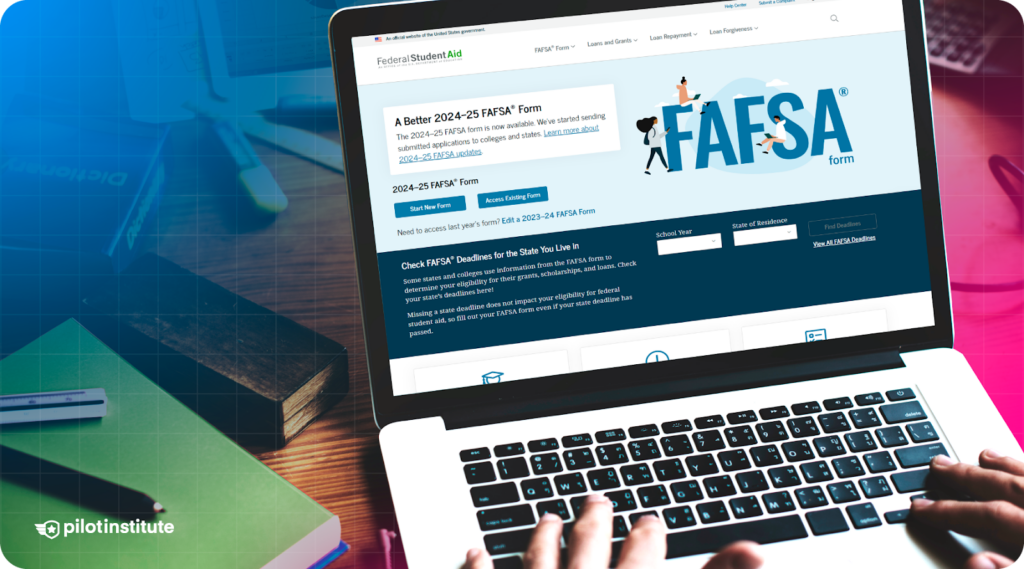
Understandably, these expenses can be a lot to take in. Well, you’ll be glad to know that there are lots of opportunities to ease the financial burden.
Now, let’s get to the good part.
Many schools offer payment plans that spread out the cost of tuition over several months, making it easier to manage the financial burden. These plans can be a great option if you’re unable to pay the full tuition upfront.
There are scholarships available specifically for those pursuing careers in aviation, including aircraft dispatching. These scholarships help reduce the overall cost of your training. It’s a good idea to research and apply for as many scholarships as possible.
You may also be eligible to receive federal student aid, including grants, loans, and work-study programs. Fill out the Free Application for Federal Student Aid (FAFSA) to see if you qualify.
Some employers may offer sponsorship or tuition reimbursement programs for employees who want to pursue an Aircraft Dispatcher License. If you’re already working in the aviation industry, it’s worth checking if your employer offers these benefits.
For military veterans, the GI Bill can make you eligible for benefits and scholarships. This can be a huge help in covering the cost of your training.
Conclusion
Did you add up your budget? Depending on the options available to you, it can range from $5,000 up to $20,000. The total cost, which includes tuition, living expenses, and other hidden costs, can add up quickly.
However, one thing is certain. Becoming an FAA-certified Aircraft Dispatcher is worth the investment. If you carefully plan your budget and look into financial aid options, you can manage these costs effectively.
Aside from budgeting your finances, you must start studying for the job as early as now. One of the tasks of an aircraft dispatcher is to issue cross-country flight plans.
Do you know how it’s done? Check out this article to learn about this part of the job.
